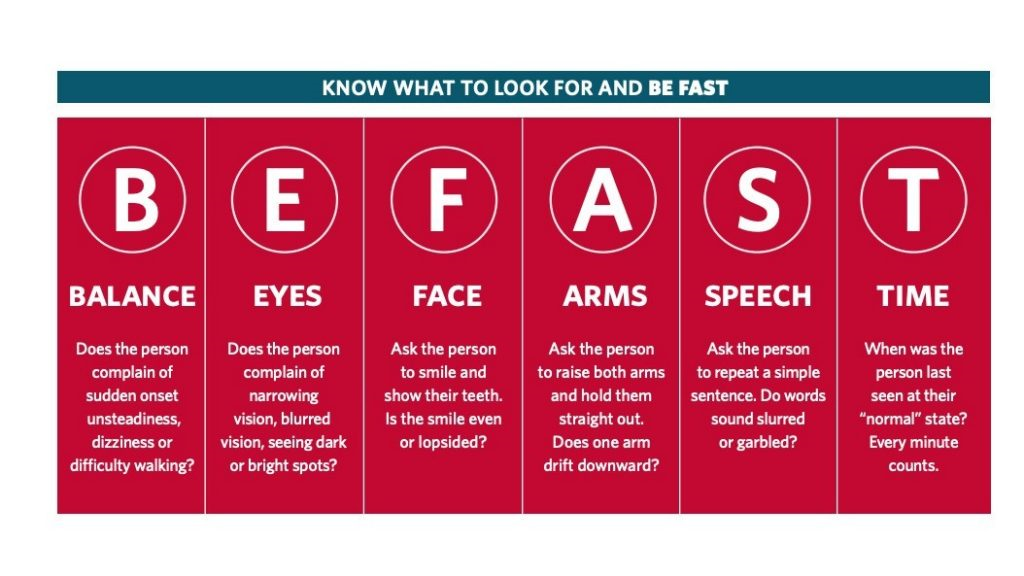Stroke Awareness Education
Stroke is a leading cause of death in the United States and the #1 cause of disability for adults. It is also preventable and treatable with early recognition and appropriate transport to a regional hospital.
If you believe that an individual is experience a stroke, Contact 9-1-1!

Know What to Look For and Be Fast
- B for Balance: Does the person complain of sudden onset unsteadiness dizziness or difficulty walking?
- E for Eyes: Does the person complain of narrowing vision, blurred vision, seeing dark or bright spots?
- F for Face: Ask the person to smile and show their teeth. Is the smile even or lopsided?
- A for Arms: Ask the person to raise both arms and hold them straight out. Does one arm drift downward?
- S for Speech: Ask the person to repeat a simple sentence. Do words sound slurred or garbled?
- T for Time: When was the person last seen at their "normal" state? Every minute counts
Strokes are a concern for our community as it interferes with our goal for all residents to live a healthy, high-quality life, age in our community, and maintain their living independence. Stroke awareness, prevention, and response is an integral part of reducing the health risks to our community.
The Centers for Disease Control and Prevention has compiled a large amount of information to learn about strokes, identify personal risk factors and how to adjust your lifestyle, how to and how to treat and recovery from strokes. This information can be accessed with the following link:CDC - Stroke Information
Additionally, our regional hospital centers and the American Stroke Association provide stroke patient educational information:
Our region is fortunate to have numerous primary stroke care centers (HCA Reston and Inova Fair Oaks Hospital) and a comprehensive stroke center (Inova Fairfax Hospital). Each of these facilities is prepared to handle the immediate patient care needs of a stroke, but we recommend all patients contact 9-1-1 instead of transporting themselves.
Our providers diligent train to provide stroke care and can provide stabilizing and life-saving interventions as necessary while expediting transport to a regional hospital.